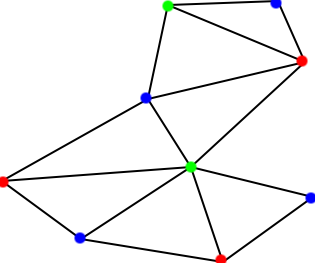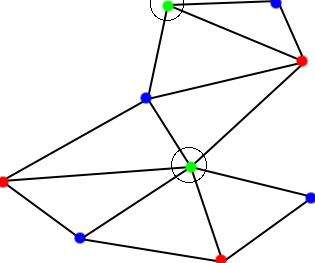



The basic art gallery problem goes as follows. Given a n-sided art gallery - which we reduce to a simple polygon -, we are interested in placing guards at certain points within the polygon such that together they see (guard) the whole polygon. Chvátal, and at a later point Fisk, proved that floor(n/3) guards are always sufficient and sometimes necessary to cover the entire polygon. This can be seen through the following argument, due to Fisk:




The first part of the theorem, always sufficient, gives the lower bound and is proven in a rough form above; sometimes necessary can be shown by creating a n-sided polygon which needs the said floor(n/3) guards, as the one below.

This subject has been extensively researched, and a linear time algorithm has been found that achieves the lower bound. However, objects in three dimensions have been less studied. Actually, it has been shown that finding the optimal placement (the one that results in the least number of guards being placed) is a NP-complete problem (Cole and Sharir).